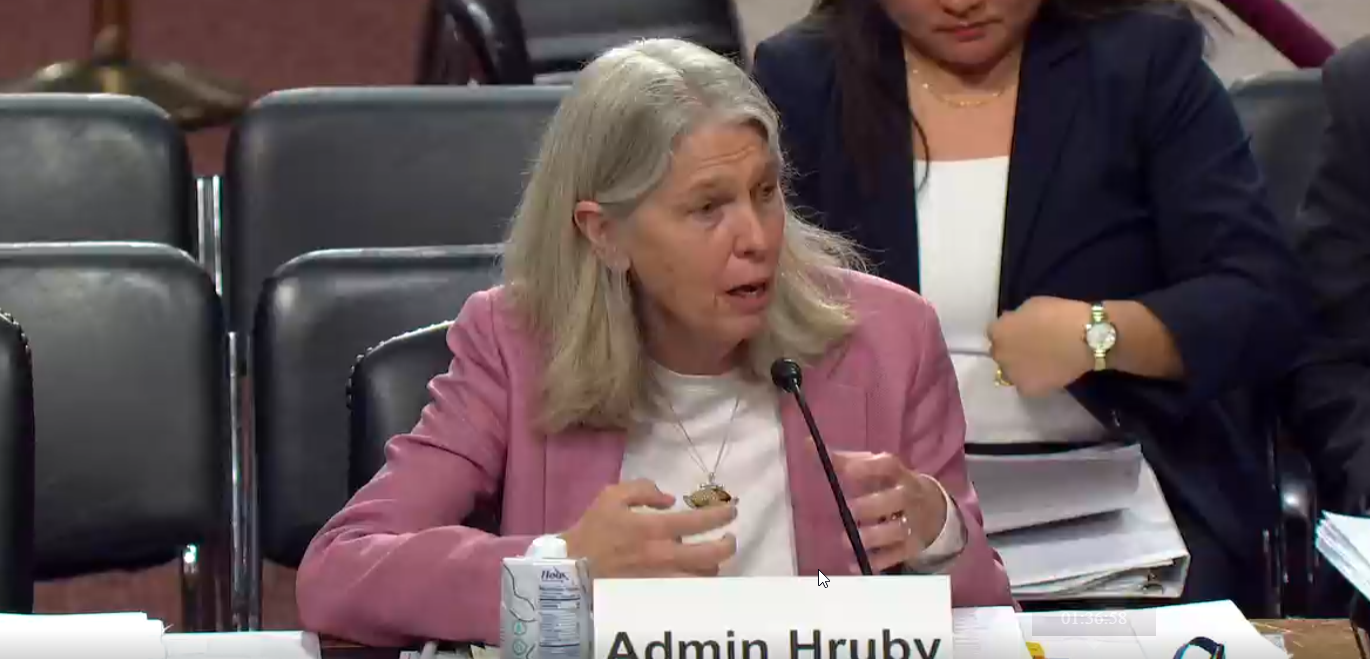
The National Nuclear Security Administration seeks $70 million for a sea-launched cruise missile warhead for fiscal year 2025 as part of the agency’s list of unfunded priorities, a lawmaker said Wednesday.
Secretary of Energy Jennifer Granholm acknowledged at the start of a hearing of the Senate Armed Services Committee that the weapon was among the National Nuclear Security Administration’s (NNSA) unfunded priorities for the fiscal year that begins Oct. 1, but Sen. Debra Fischer (R-N.D.) quantified the funding the NNSA seeks.
The NNSA did not include the sea-launched warhead in its 2025 budget request, released in March, because the 2024 National Defense Authorization Act, which required the agency to work on the warhead, was signed in late December, too late for the agency to reformulate its budget request to include the warhead, Granholm said testified Tuesday.
So, Granholm said, the weapon landed on NNSA’s unfunded priorities list, a usually private document agencies share with Congress between the publication of their budget requests and the writing of a budget bill.
Meanwhile, NNSA Administrator Jill Hruby said during Wednesday’s hearing, where she was the only other witness, the tip of the sea-launched cruise missile warhead might not be a variant of the W80-4 air-launched cruise missile warhead.
“[W]e’re also looking at other options that might, might, we don’t know yet, be simpler to do without disrupting our current production flow,” Hruby said.
That would be a major deviation compared with prior public statements from the NNSA, and with the requirements Congress has set.
W93 Pits
Also at the hearing, Hruby said the Savannah River Site in South Carolina will produce at least half the plutonium pits for the Navy’s W93 warhead.
“We don’t think we can get that facility up in time to do all of the W93 builds, but it’s important that we have a fair number of those new pits,” Hruby said the hearing.
Without new pits for W93, NNSA’s other option is “to reuse pits, which introduces some uncertainty but more importantly … it limits what else we can do in our stockpile when we reuse those pits,” Hruby said.
W93 is the warhead for a planned submarine-launched ballistic missile that will replace the Trident II-D5 some time next decade.
Hruby testified in the Wednesday morning hearing alongside Secretary of Energy Jennifer Granholm.
NNSA notionally plans to produce its first proof-of-concept W93 warhead in the mid-2030s, right around the time Hruby forecast the Savannah River Plutonium Processing Facility would open.
According to NNSA’s fiscal year 2025 budget request, the agency planned to complete W93’s Weapon Design and Cost Report, which includes rough cost and schedule estimates, in fiscal year 2026 and stage test flights of the weapon between fiscal years 2027 and 2029. The agency requested more than $455 million for W93 for 2025.
The Savannah River Plutonium Processing Facility, the larger of NNSA’s two planned pit factories, should be finished in 2032, Hruby said Wednesday, but it will take “a few more years” after that before the facility is ready to cast plutonium pits, the fissile cores of a thermonuclear weapon’s first stage.
In its 2025 budget request, the NNSA said the Savannah River pit plant could cost as much as $25 billion to build. That’s more than twice as high as the agency’s top-end estimate from a year ago. The agency planned to create a formal cost and schedule baseline for the facility in fiscal year 2026, according to the 2025 request.
The NNSA’s other plutonium pit factory will be at the Los Alamos National Laboratory in New Mexico, which will initially manufacture new pits for the W87-1 warhead to be used on future Sentinel missiles, the Air Force’s next silo-based intercontinental ballistic missile and a replacement for the service’s current Minuteman III missiles.
Los Alamos will start making pits for W87-1 warheads this year and ramp up to 30 annually by 2028, Hruby said Wednesday